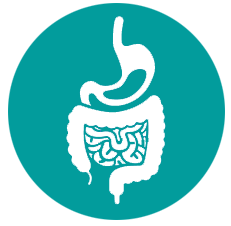Cost Effectiveness Analysis Evaluating Real-Time Characterization of Diminutive Colorectal Polyp Histology using Narrow Band Imaging (NBI)
Swati G. Patel1,2*, Frank I. Scott1, Ananya Das3, Douglas K. Rex4, Sarah McGill5, Tonya Kaltenbach6, Dennis J. Ahnen1, Amit Rastogi7, Sachin Wani1
1Division of Gastroenterology & Hepatology, University of Colorado Anschutz Medical Center, Aurora, CO, USA
2Veterans Affairs Hospital, Denver, CO, USA
3Arizona Center for Digestive Health, Gilbert, AZ, USA
4Division of Gastroenterology & Hepatology, Indiana University School of Medicine, Indianapolis, IN, USA
5Division of Gastroenterology & Hepatology, University of North Carolina School of Medicine, Chapel Hill, NC, USA
6Division of Gastroenterology & Hepatology, University of California, San Francisco, CA, USA
7Division of Gastroenterology & Hepatology, University of Kansas, Kansas City, KS, USA
Background: Endoscopists and new computer-aided programs can achieve performance benchmarks for real-time diagnosis of colorectal polyps using Narrow-Band Imaging (NBI), though do not perform as well as endoscopists with expertise in advanced imaging. Previous cost-effectiveness studies on optical diagnosis have focused on expert performance, potentially over-estimating its benefits.
Aim: Determine cost-effectiveness of an NBI ‘characterize, resect and discard (CRD)’ strategy using updated assumptions based on non-expert performance.
Methods: Markov model was constructed to compare cost-effectiveness of the CRD strategy, where diminutive polyps characterized as non-adenomas with high confidence are not resected and adenomas are resected and discarded, versus standard of care (SOC) in which all polyps are resected with histologic analysis. Rates related to NBI performance, missed polyps, polyp progression, malignancy, and complications, as well as quality-adjusted life years (QALYs) were derived from the literature. Costs were age and insurer-specific. Mean QALYs and costs were calculated using first order Monte Carlo simulation. Deterministic and probabilistic sensitivity analyses were conducted.
Results: The mean QALY estimates were similar for the CRD (8.563, 95% CI: 8.557-8.571) and SOC strategy (8.563, 8.557-8.571), but costs were reduced ($2,693.06 vs. $2,800.27, mean incremental cost savings: $107.21/person). Accounting for colonoscopy rates, the CRD strategy would save $708 million to $1.06 billion annually. The model was sensitive to the incidence of tubular adenomas; the results were otherwise robust in all other one-way and probabilistic analyses.
Conclusions: An NBI CRD strategy is cost-effective when compared to the SOC, even when employed by non-experts. The appreciated benefit is primarily due to cost savings of the CRD strategy.
ABBREVIATIONS
Colorectal Cancer (CRC), Narrow Band Imaging (NBI), American Society for Gastrointestinal Endoscopy (ASGE), Negative Predictive Value (NPV), Positive Predictive Value (PPV), Preservation and Incorporation of Valuable Endoscopic Innovation (PIVI), First Order Monte Carlo Simulation (FOMCS), Standard of Care (SOC), Characterize, Resect & Discard (CRD), Quality Adjusted Life Year (QALY), Incremental Cost Effectiveness Ratio (ICER), Sessile Serrated Polyp (SSP), Willingness to Pay (WTP), Adenoma Detection Rate (ADR)
View / Download Pdf The Glycemic, Cardiovascular and Hepatic Outcomes of Pioglitazone Treatment: Evidence for Its Increased Use
View / Download PdfMayer B. Davidson
Charles R. University, Los Angeles, California
Bilateral adrenal hemorrhage in the Complicated Post-operative Period of Colonic Surgery
Beatriz Cros Montalbán*, Jorge García Egea, Ana Nogués Pevidal, Issa Talal El-Abur, Carlos Yánez Benítez, José Fernando Trebollé, Paola Gracia Gimeno, Juan Luis Blas Laína
Hospital Royo Villanova, Zaragoza, Spain
Adrenal hemorrhage is a rare complication that can compromise patient survival. We present the case of a 74-year-old man who, in the complicated post-operative period of a subtotal colectomy for transverse colon adenocarcinoma adjacent to the splenic angle, had significant asthenia, hypotension, and hyponatremia on the blood test. Abdominal CT scan and basal cortisol in blood were performed, compatible with bilateral adrenal hemorrhage and adrenal insufficiency. Treatment with intravenous corticoid was initiated, with the recovery of blood pressure and natremia. The clinical manifestations of bilateral adrenal hemorrhage secondary to intra-abdominal sepsis are usually imperceptible and attributed to other post-operative problems, making it difficult to reach a diagnosis, although early detection makes it possible to treat satisfactorily.
View / Download Pdf Short term outcome of surgery for gastric cancer in a tertiary teaching hospital in Addis Ababa, Ethiopia with a review of African literature
Hailu Wondimu Gebresellassie1, Bereket Amare2
1Department of surgery, College of Health Sciences, School of Medicine, Addis Ababa University, Addis Ababa, Ethiopia
2Senior pathology resident at department of pathology, SOM, CHS, AAU, Ethiopia
Background: There are only a few published works of literature on gastric cancer in Africa. Surgery is the main treatment of gastric cancers that are confined to the stomach and regional lymph nodes. There are limitations in the adequacy of surgery and the availability of neo-adjuvant and adjuvant chemotherapy in Africa. This paper addresses short term one-month outcome of surgery and quality of surgery in terms of lymphadenectomy.
Method: This is a prospective descriptive study of outcomes and quality of surgery of gastric cancer in a tertiary teaching hospital in Addis Ababa, Ethiopia from September 2018 to August 2019 in GI unit of the department of surgery, school of medicine of Addis Ababa University.
Result: 47 patients underwent surgery with a male to female ratio of 1.47:1. Patients’ age range from 26 to 80 years, mean of 52.7 +/_8.4, and a median of 50 years. The commonest age group were 41-50, accounting for 34 % followed by age group of 51-60 (27.6%). Gastric adenocarcinoma accounts for 85.1%. Distal (antrum and pylorus) were involved in 46.8 %. Distal subtotal gastrectomy is the commonest procedure done with curative intent and a bypass gastro-jejunostomy for palliation. Adequate lymph node dissection was achieved in less than a third of patients. There were 9 major morbidity and 6 deaths making post-operative morbidity and mortality rate of 19% and 12.8% respectively.
Conclusion: Although morbidity and mortality of surgery in this study is acceptable, the quality of cancer surgery is not good. We in Africa need to have better training to be able to do a proper and acceptable oncologic surgery for gastric cancer. This can be achieved by creating partnerships with other nations of better expertise and experience in the management of gastric cancer.
View / Download Pdf